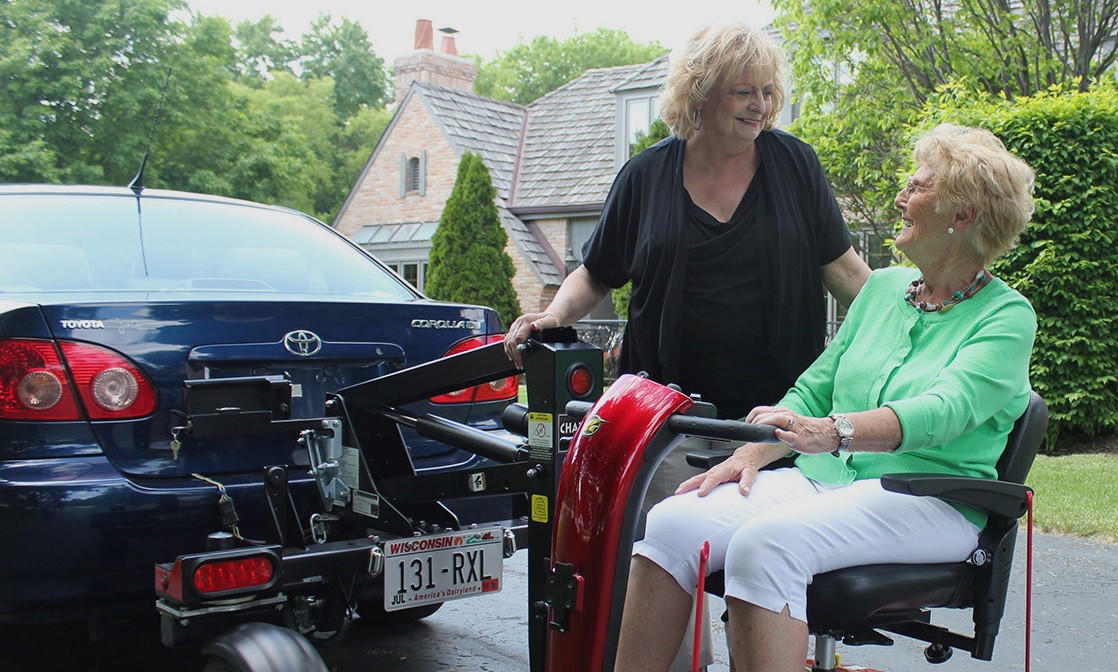Suddenly finding yourself in the position of needing to buy a wheelchair accessible vehicle (WAV) is not necessarily something anyone would say is an enjoyable experience. To be in this position usually means that you or a loved one have been through a trauma, an accident or an illness, and, unfortunately, now require the use of a wheelchair.
Choosing and buying your first wheelchair accessible vehicle is rarely met with the same excitement as choosing a first car and the freedom that comes with it. Buying your first WAV can be a time of sadness, and can sometimes feel like a loss of freedom.
Buying a first WAV is quite often something that’s done in a hurry, you feel like you need to sort something out quickly, and that can easily leave you buying a vehicle that may not be quite right for you. You can be emotional and vulnerable, and your head is likely to be spinning from all the information you’re being given and the choices you are having to make. When bombarded with such an overload of info, it’s easier to make a wrong decision.
We’ve put together some advice that can help you make better choices when it comes to buying your first wheelchair accessible vehicle.
1. Relax… It’s just a car
You’ve been tasked with having to buy something expensive that you know nothing about. It’s easy to get stressed – but in terms of the vehicle itself, there is no need.
A wheelchair accessible vehicle is just a car, albeit with some modifications. The modifications are only there to enable the easier transportation of a wheelchair and user. Everything else about it is just the same. Differences include a ramp at the side or rear to load the wheelchair, and an area set aside for the wheelchair to rest. Usually, this area is alongside the rear seats.
2. Don’t Feel Rushed
It’s tempting to jump right in and buy the very first thing you see… don’t!
Wheelchair accessible vehicles can be a costly commitment. If you need a vehicle to get around immediately, then hiring a WAV is a better option than blindly purchasing one. Hiring will give you a feel for loading the wheelchair and driving and parking it, and after a few days you’ll have a clearer idea of which features and size will best suit you.
Once things have calmed down and you’re thinking clearly, then you can look at buying your own WAV.
You can try contacting specialists at WAVS GB, a wheelchair accessible vehicle dealer, and they’ll likely allow you to hire a WAV of your choice for up to a month so that you can try it out and decide if it’s right for you. And the best part is, you’ll get half the hire cost back when you buy.
3. Know What you Want – Ask Lots of Questions!
Don’t visit a dealer without a rough budget in mind, and plenty of questions to ask.
While a WAV is just a modified car, it’s important that it can meet your needs.
If you’re the driver do you need a manual or automatic transmission?
Do you want the wheelchair passenger to ride up front or in the back?
Should the wheelchair load at the side or rear?
Is there a chance you may use a power wheelchair or scooter in the future? If yes, will it fit?
Figure out if there’s enough room, and don’t forget about the space the wheelchair itself will take up. How many non-wheelchair users will you need to transport, as well as the wheelchair?
4. Use a Specialist Dealer
We’d always recommend visiting dedicated WAV dealers rather than standard car dealers that just happen to have a WAV or two in stock. Dedicated dealers will have far more experience and will be sympathetic to the issues you are facing. They’ll be able to answer your questions and anticipate your needs.
If there isn’t a dealer near you, and traveling any distance is a challenge, then contact a dealer and ask if they offer home demonstrations. Usually free of charge (or sometimes with a small travel cost to pay), a home demonstration allows you to select a vehicle from their website which the dealer will bring to you so you can try it for yourself.
5. Don’t Assume you have to Buy
Depending on the nature of the illness or injury, buying isn’t always the best solution.
You may only need the WAV for a short period while an injury heals, or perhaps, sadly, the illness doesn’t have a good prognosis. Buying means that at some point you’ll end up having to sell it, and may occur at a very traumatic time.
Hiring a WAV means you have a manageable monthly cost, and you can simply hand it back and walk away. No finance agreement to settle, no haggling with potential buyers, no lengthy sales to deal with. Hiring gives you a fixed monthly budget and no commitment.
6. Make Sure there is a Warranty
For complete peace of mind make sure that any vehicle you choose comes with a warranty. Look for a minimum of a 12-month warranty, and find dealers that also offer breakdown cover (They are out there!) This way, you can drive around worry-free.
7. Relevant Terms to Know
While researching info on a wheelchair accessible vehicle, you may come across some terms which you are not familiar with. To guide you, here’s a quick list of the most common words you’ll need to know, and what they mean.
Ramp:
Usually a ramp will fold out from the rear of the vehicle to enable loading of the wheelchair. Manual ramps are the most common, but powered ones are available.
Lift:
On larger vehicles, a powered lift will raise and lower the wheelchair and user into the vehicle.
Winch:
Used normally in conjunction with a ramp, a winch will attach to the wheelchair and allow it to be pulled without any effort into the vehicle.
Up-Front Passenger:
This is used when the front passenger seat has been removed and the wheelchair will slide into place
Wheelchair Driver:
This is a vehicle which was modified to allow a wheelchair user to drive the car.
Hand Controls:
They’re used by a wheelchair driver. Hand controls transfer the foot controls (accelerator, brake etc) onto easy-to-use hand controls on the steering wheel or dashboard, so that those with less physical strength in the legs can still man a vehicle by means of hands.
Conversion:
The process of converting a regular car, van or MPV to a wheelchair carry vehicle usually involves removing one or more rear seats, lowering the floor and adding a ramp.
Don’t be afraid to ask for advice. You’ll find that most dealers have been asked very similar questions before, and want to help you get the right vehicle. Specialist dealers will be only too happy to help, and quite often, their experience can be an invaluable tool in choosing your first WAV.




